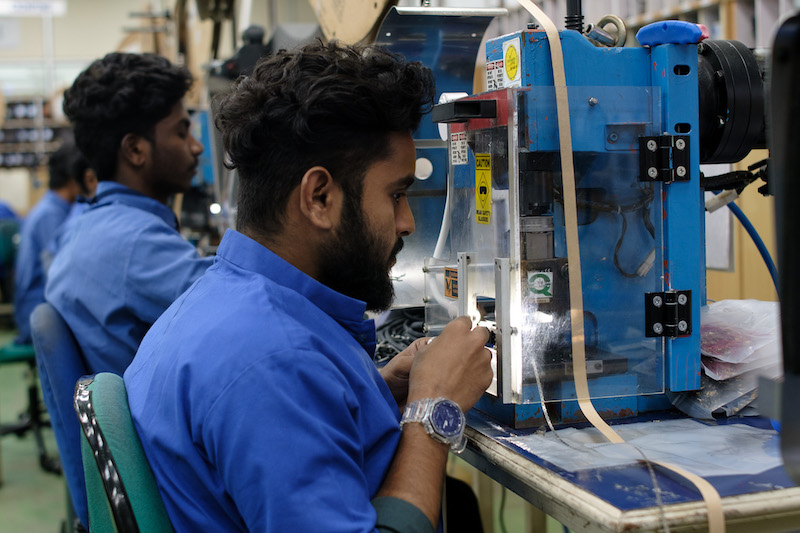Online readership of WHN is really coming on strong. We now have well over 7,000 online readers per issue which is beginning to outpace print readership. Due to high shipping costs for overseas delivery, many of these new readers are outside the US. In the past year, readership in India has surpassed Canada and Mexico. One company in India has been a fan of WHN well before we had such a powerful web tool for online reading. SFO Technologies Pvt Ltd, part of the NeST Group, has been using the publication as a resource for many years.
I spoke with Shiyas Rehman, Unit Operations Head, and Varghese Varghese, Engineering Manager at SFO’s Cable & Wire Harness Division regarding the company’s history, where they specialize and how they operate. Shiyas began with a description of the corporate hierarchy. “There is a technology arm and a non-technology arm of NeST Group. The non-technology endeavors include frozen food processed and exported to the US, European and middle east markets, along with some bottled juices and water which are predominantly sold within the state of Kerala. We also export a lot of spices, mainly cardamom. There is also a real estate division developing apartments, villas, and technology parks. SFO Technologies is purely the engineering services and manufacturing arm of the NeST group.”
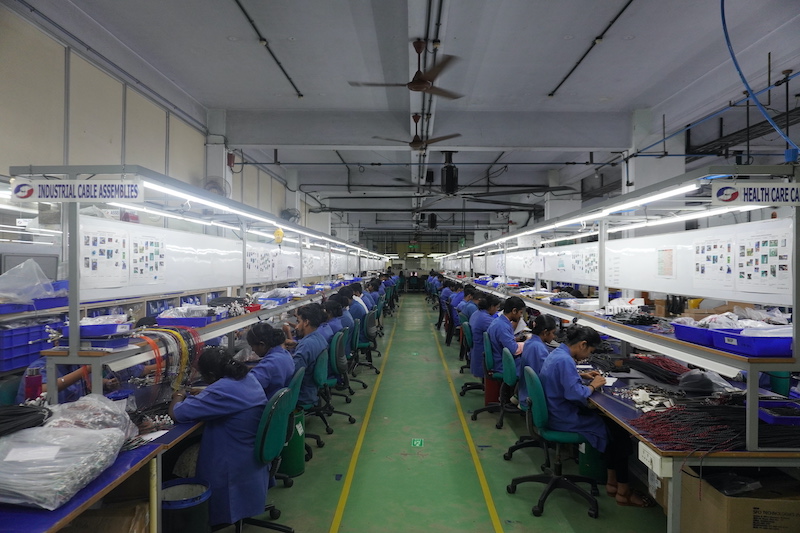
The SFO journey began in 1990 as a contract manufacturer for a US company. Originally known as Sun Fiber Optics, they were building PCBAs, fiber optic splitters, multiplexers, and switches. SFO began to spawn other technical companies as opportunities arose. One spinoff was Sun Generic cables which began in 1994. They initially built cables for several large US manufacturers. This expanded to similar customers in other countries over the years
The dot-com bubble had a significant impact on all of the business units. With some rethinking of the business, two significant changes came about. They realized they needed to streamline the business units while addressing changing customer needs. “There were some problems with our largest customers and just a lot of changes to the global business scenario,” Shiyas detailed. “At one point, we had 12 to 13 individual manufacturing companies making different technical products for customers, mainly in the US, Europe, UK and Japan. Each of these divisions had its own management structure and were buying parts from suppliers individually. That’s when we decided to take all these separate entities and form one single parent company, with all the manufacturing units being divisions of the parent company.”
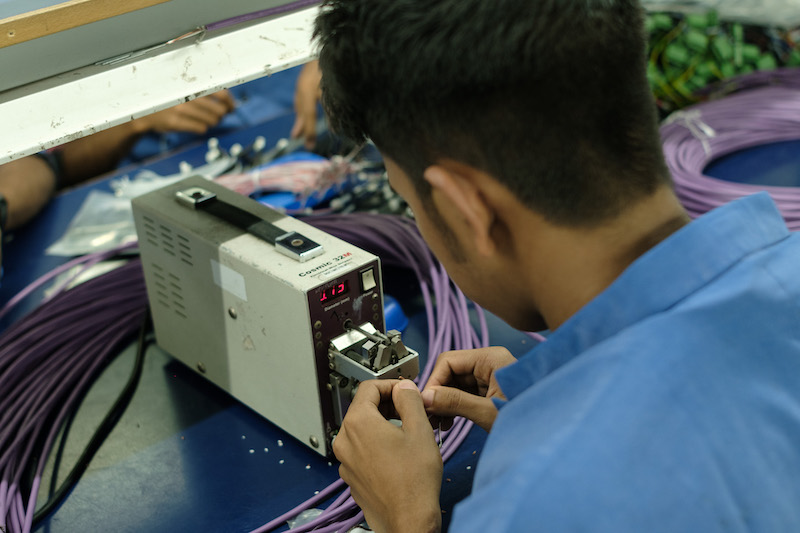
Since Sun Fiber Optics was the first company, they decided to name the new parent company SFO Technologies. All of the top line functions like supply chain, administration, HR and finance were then handled at the corporate level with a representative handling each individual division. Each division had an individual operating team, but they were linked to SFO corporate. They developed the KPI‘s and all the performance indicators on a corporate level, and those subsequently flowed down to each division.
SFO had manufacturing divisions in power, electronics, cable and wire harness, optical, mechanical, plastics, and machining. With this powerful new multi-division structure in place, they were now able to bring on the second major change; offering something very different to their customers. “The contract manufacturing model became less attractive for our customers,” Shiyas noted. “We started to offer customers design and integration services along with manufacturing so we could supply a complete product or subassembly, versus just a single component.”
Shiyas outlined an early example where a customer came to them for a specific part only to have SFO build the full product. “If you look at that final product, it’s made up of multiple parts. You have the electronic parts, mechanical structures, high-precision machined parts and it also has many harnesses. We take that design, and we do the entire integration within SFO. We do the coordination between the divisions, so the customer only has to deal with one supplier, and we don’t stack margins at each division level but add a single profit to only the final product which benefits the customer with better pricing.”
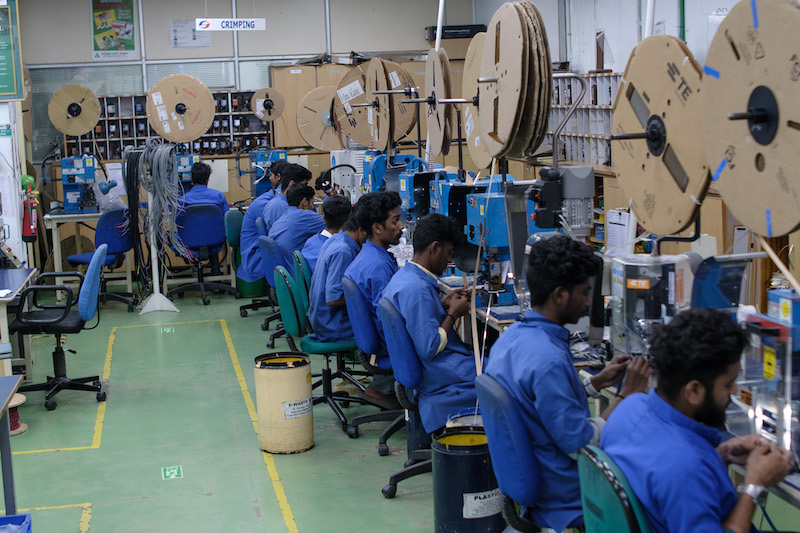
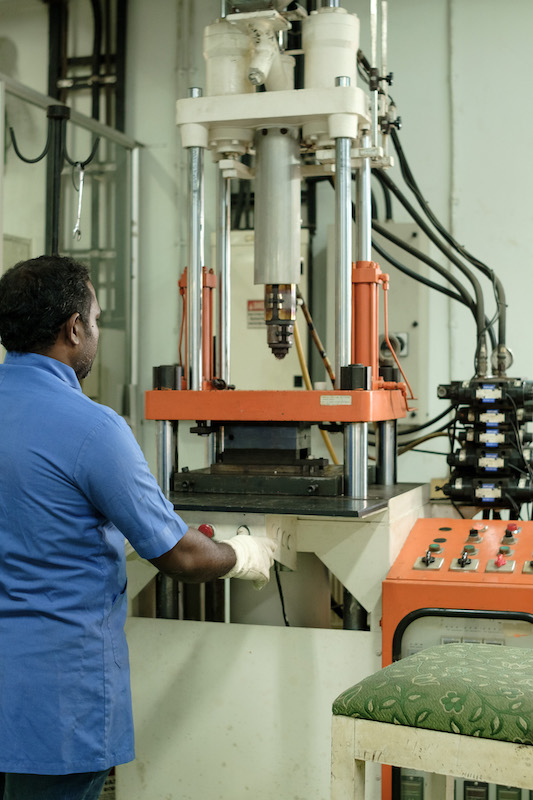
Often, an SFO division will get an official visit from a customer seeking a particular component or subassembly, only to turn that into an integration opportunity for the group due to the vertically integrated capabilities they have. “We have a customer for whom we manufacture thermal imaging cameras for defense. They came to the electronics division with a requirement to design and manufacture a PC board and were shown the other divisions. While here at the harness division they said, ‘oh, there are a bunch of harnesses we need, can you make those?’ They went to the optical manufacturing division and saw our class 10,000 clean room and said, ‘well, we have plenty of optics and we need a clean room for assembly.’ We ultimately made the whole camera for them, so what started out as a RFQ for a PC board became an integration order for the whole system.”
Cost optimization is a big part of SFO’s integration services. Shiyas described another typical case. “We had a customer producing ATM machines who needed them re-designed to suit the Indian market requirements. We identified 20+ individual projects within that whole system and gave a proposal to the customer showing the cost savings. The customer came with us and we are now producing that entire unit with final assembly in one of our divisions.”
India has a great deal of respect for intellectual property rights, and all SFO divisions take that quite seriously. “It’s something we are always proud to talk about,” Shiyas emphasized. “We have some customers, particularly in aerospace, who want dedicated manufacturing space with controlled access. We have others where we agree that we will not share their drawings with any of our suppliers. For those, we create iindividual documents, capturing only the key points, never revealing who the end customer is. It’s all based on individual requirements and has helped build our customers’ confidence in us.”
All of the units of SFO Technologies are located in a Special Economic Zone in the state of Kochi. “It is declared a foreign land as far as economic policies by the government of India. The system is such that you can import raw materials from anywhere in the world without having to pay any import duties or taxes. You can then make products from these materials and export directly to any external country 100% duty and tax free. This is a policy of the Indian government to promote the export of goods,” Shiyas described. The company can still sell up to 25% of their goods inside India with all duties and taxes due at the time of sale.
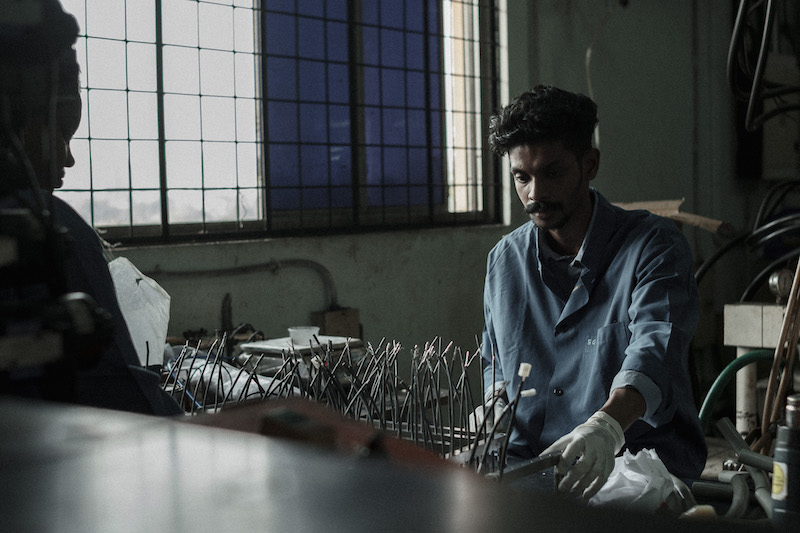
Over the years, the cable and wire harness division has gained a lot of knowledge in unique and distinct markets. Thus, from an operations perspective, they decided to classify themselves into four distinct verticals. “The first vertical is aerospace and defense which has its own set of requirements tailored to the industry needs. This includes things like NADCAP for process improvement, crimp cross-sectional analysis, laser wire stripping, laser wire marking and the AS9100 certification. We supply to all the big giants in the world for commercial and military aircraft either directly or through second-tier manufacturers.”
The second vertical is healthcare. “A US based healthcare giant is one of the biggest customers in this arena and has been with us over 20 years. There are also other healthcare customers from US, Europe and India.
Under the automotive vertical, the harness division also makes products for its mostly Canadian customers in the city transit bus sector, specifically a Canadian Bus Manufacturer who produces city transit busses for Canada and the US. An additional automotive customer produces Type A school and multi-function buses, with other customers in the agricultural sector. “These harnesses are less in terms of numbers, but the complexity is much higher,” Shiyas mentioned.
Many harnesses don’t fall into any of those categories and are classified as industrial customers. “One particular example is the cable harnesses we manufacture for an American renewable energy company. They manufacture and market solid oxide fuel cells that produce electricity on-site,” Shiyas detailed. SFO also makes assemblies for US giants who produce power tools and linear motion/automation equipment.
John mentioned that the SFO Cable and Wire Harness Division also has a sister company outside the economic zone in Pune which is near Mumbai. There they produce about 130 different assemblies, primarily for the Indian rail industry. “These are massive harnesses on form boards as big as half the shop floor. They have many breakouts and connections and are very complex. Because of the size and weight of these, the customer wants them built as close as possible to their integration facility in Pune,” he stated. This facility also produces cable assemblies for the renewable energy sector with wire sizes as high as 400 mm sq. In short, SFO Technologies Pune division is a purpose-built facility to make high-spec, complex (~1500 interconnect) large, wire and cable harnesses for locomotives, wind turbines, off highway vehicles and other such demanding applications.
As far as quality standards, SFO is certified to ISO 9001 and ISO 14001 for the whole business unit. In addition, they have industry specific certifications like AS9100 for aerospace and ISO 13485 for healthcare. All employees are certified to IPC/WHMA A-620 with in-house trainers. The entire facility is UL approved with audits every six months.
As expected, most new business comes to SFO through word-of-mouth. “We do attend many trade shows, and there are a few where we put up booths,” Shiyas noted. “Recently we had a pretty big booth at a defense and aerospace expo in Bangalore, and that was very good for us.”
Demand for harnesses is increasing exponentially at SFO and they are growing very fast. In fact, all of the divisions are experiencing stellar growth. Revenues from the cable and wire harness division have increased 60% over last year and they are targeting another 60% growth next year. In order to handle this growth, SFO reached an agreement with the Indian government to develop their own Foreign Trade Zone facility. It boasts greatly enhanced and flexible manufacturing space. Two SFO divisions have already moved to the new facility and the harness division should be completely moved in by the end of Q2, 2023.
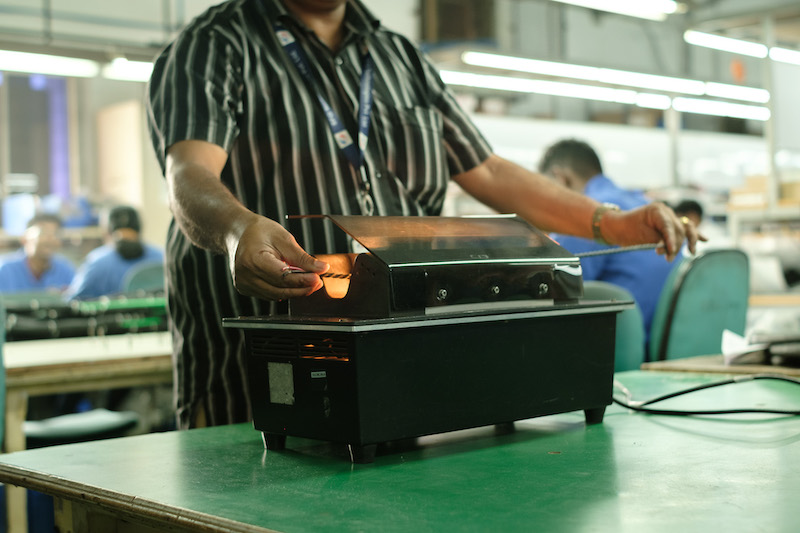

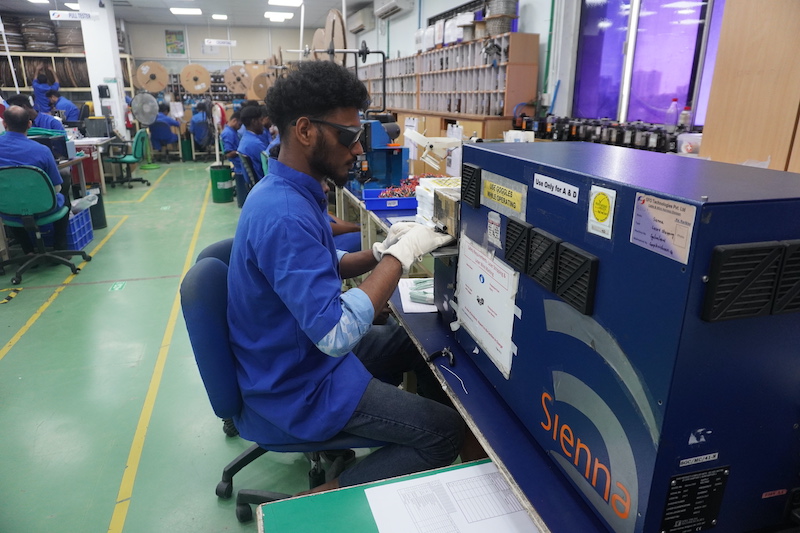
I asked Shiyas about onboarding new technical employees and learned something interesting about their location. “We are in the state of Kerala, which is the southernmost state in India. For over two decades, we have been at 100% literacy. This has helped us create a good pool of technically trained people.” In India they have ten years of primary education. After that there are two more years of schooling required, or students can be diverted into technical training. “It’s called the Industrial Training Institute or Technical Training Center where you can take a Two-year/ three-year course and then you have technical training. Or you can do two years in a pre-degree/higher secondary phase and then move into a degree course like engineering, medical, finance, legal, or whichever stream you wish.” Because of this, Kerala has a large pool of technically qualified candidates available to meet SFO’s requirements. He also mentioned that the Indian population is very young. “About 65% of the population is below 35 years of age, so there is a big chunk of young people available to work which is a big advantage for India.”
Shiyas and John credit the success of the company to the vision and commitment of the top management, their high-quality standards, and ability to be flexible while offering multiple services under one corporate umbrella. “We have always been a quality focused company with great engineering talent,” Shiyas proclaimed. “One of those engineers is sitting next to me. John has been in the cable industry for over 27 years and you will not find many people in the world with a greater depth of knowledge in harness manufacturing.” For these, and many more reasons, the future looks busy for the cable division, as well as all the divisions of SFO Technologies.
Check out sfotechnologies.net for a full list of capabilities. For direct inquiries, you can contact Shiyas at [email protected] or John at [email protected] or [email protected]




















































